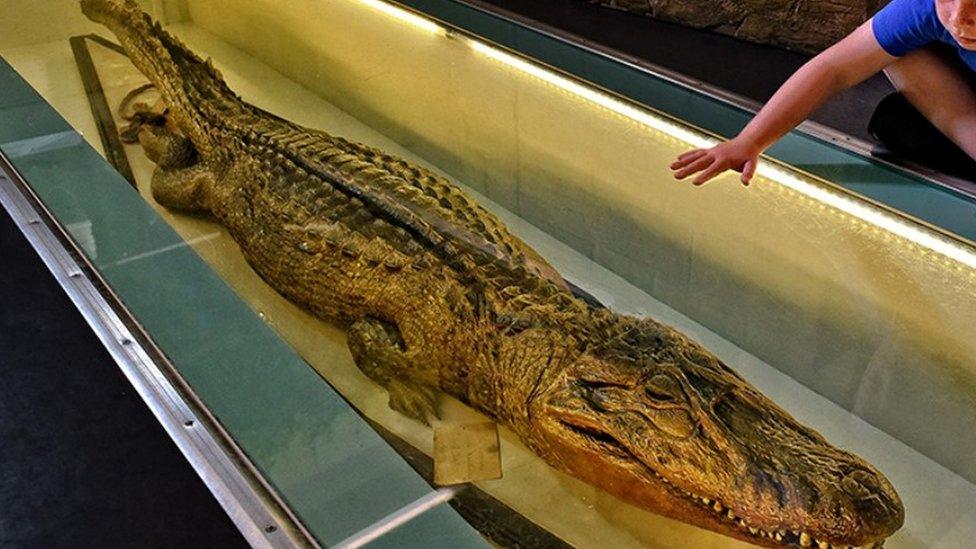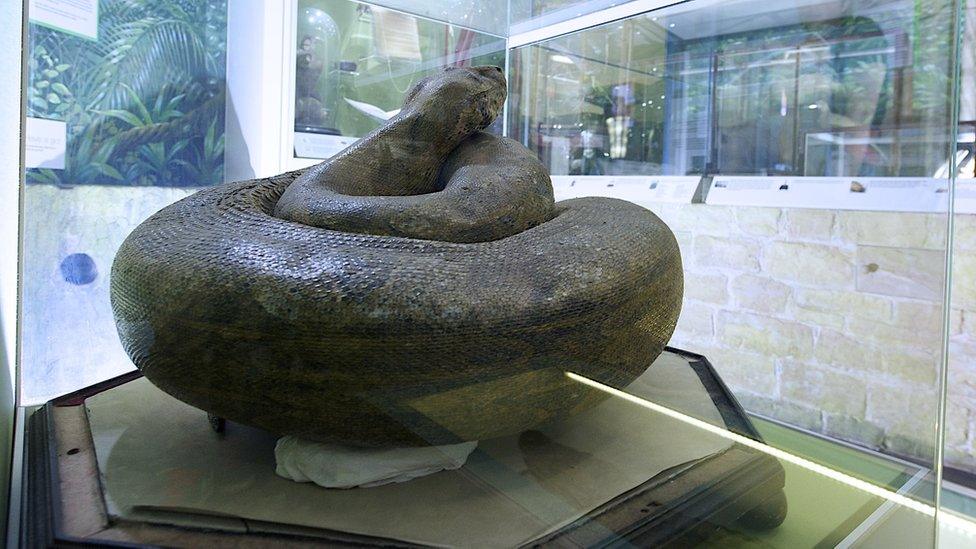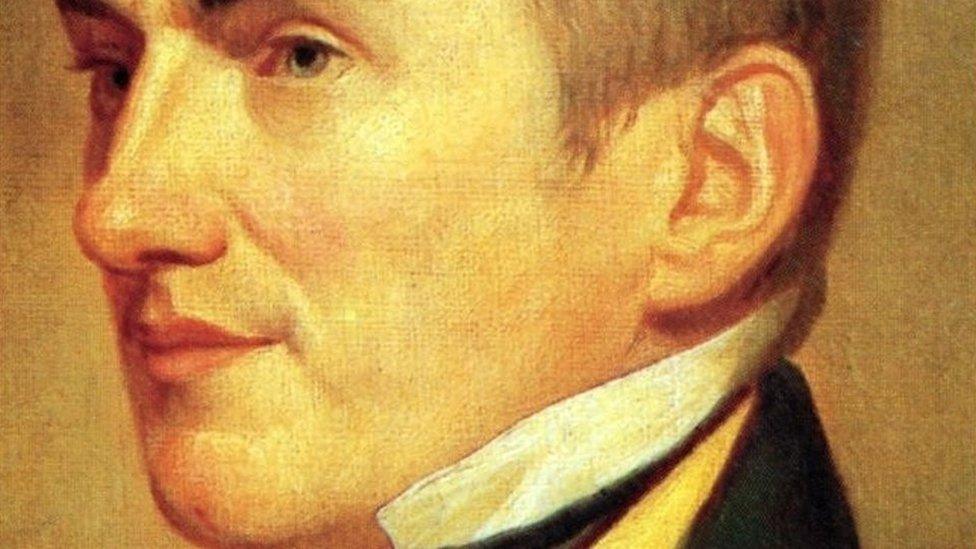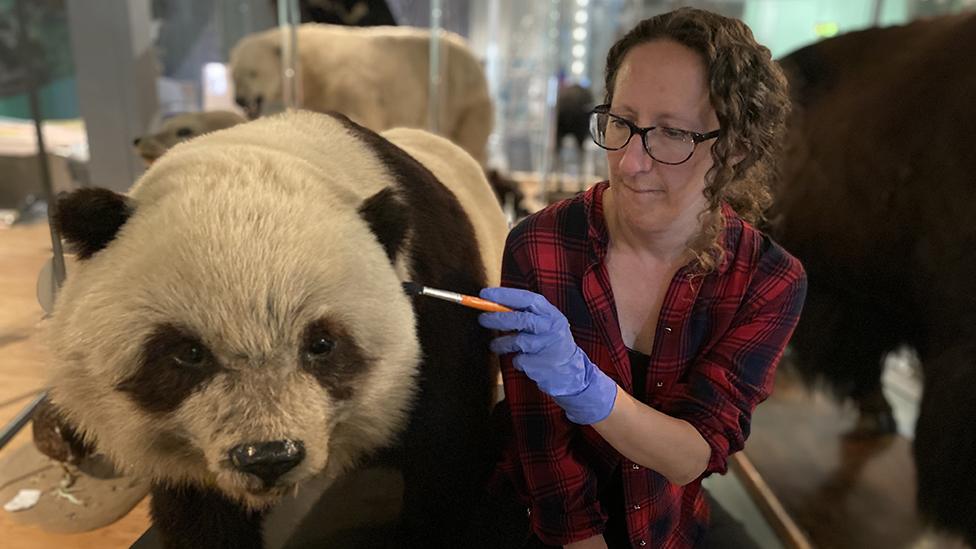Wakefield Museum to lose prized Waterton caiman
- Published

The reptile was captured on one of Charles Waterton's trips to South America
A museum is to lose its famous stuffed caiman along with a collection of other preserved animals that have been on show for more than 50 years.
The objects, which belonged to conservationist Charles Waterton, have been at Wakefield Museum since 1967.
Owners Stonyhurst College, which had loaned the objects, has asked for the collection to be returned.
Waterton, a Victorian environmentalist and explorer, was born in Wakefield and studied at the the Lancashire college.

His collection, which features this boa constrictor, can be viewed until the end of the year
He built the world's first nature reserve at his home in Walton and was a skilled taxidermist, preserving specimens he found on his travels abroad.
The reptile, which was captured during one of his trips to South America, is displayed beneath a glass floor at the museum and has been a particular draw for visitors.
Councillor Michael Graham, Wakefield Council's cabinet member for culture, said: "We have been very fortunate to have been able to borrow this fantastic collection of objects from Stonyhurst College for the past 50 years.
"Many of our residents have enjoyed seeing them on display, particularly the caiman, but it is now time for the objects to return to Stonyhurst College to be enjoyed by a different audience."
The council said Waterton's contribution to history would continue to be told and residents are being invited to get involved on how to do this, the Local Democracy Reporting Service said.

Charles Waterton was said to be an inspiration to broadcasting legend Sir David Attenborough
Kevin Trickett, president of Wakefield Civic Society, said the loss of the collection was an opportunity to explore other areas of the city's history.
"We need a museum that tells us more about Wakefield. We have a great heritage of mining, waterways and woollen mills and there are lots of things in storage that are seldom seen in the museum."
The collection will remain at the museum until the end of the year before it moves to Stonyhurst where it will be housed in a new gallery at their school near Clitheroe.

Follow BBC Yorkshire on Facebook, external, Twitter, external and Instagram, external. Send your story ideas to yorkslincs.news@bbc.co.uk, external.
- Published25 May 2022

- Published14 May 2022
